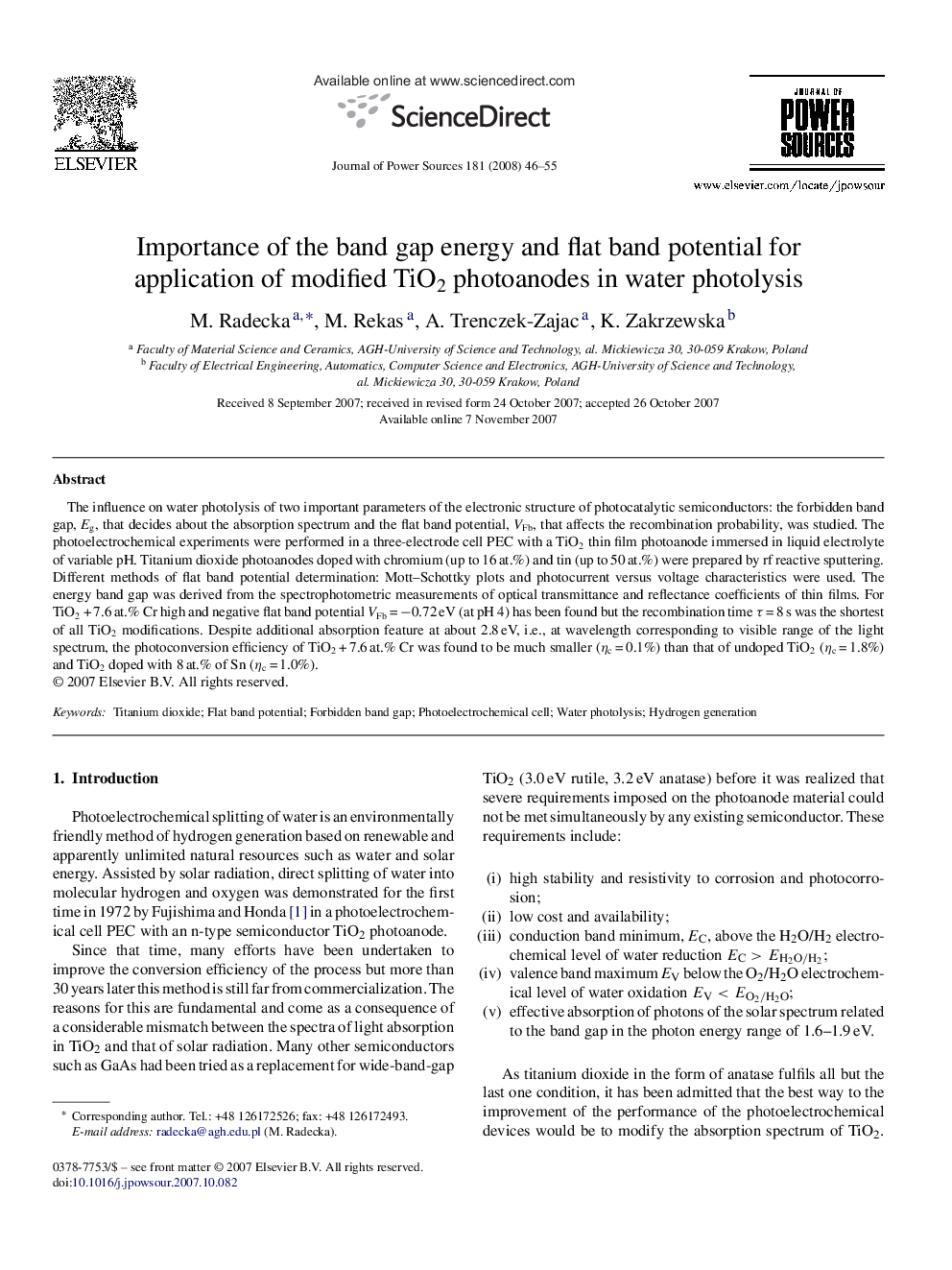| Article ID | Journal | Published Year | Pages | File Type |
|---|---|---|---|---|
| 1285479 | Journal of Power Sources | 2008 | 10 Pages |
The influence on water photolysis of two important parameters of the electronic structure of photocatalytic semiconductors: the forbidden band gap, Eg, that decides about the absorption spectrum and the flat band potential, VFb, that affects the recombination probability, was studied. The photoelectrochemical experiments were performed in a three-electrode cell PEC with a TiO2 thin film photoanode immersed in liquid electrolyte of variable pH. Titanium dioxide photoanodes doped with chromium (up to 16 at.%) and tin (up to 50 at.%) were prepared by rf reactive sputtering. Different methods of flat band potential determination: Mott–Schottky plots and photocurrent versus voltage characteristics were used. The energy band gap was derived from the spectrophotometric measurements of optical transmittance and reflectance coefficients of thin films. For TiO2 + 7.6 at.% Cr high and negative flat band potential VFb = −0.72 eV (at pH 4) has been found but the recombination time τ = 8 s was the shortest of all TiO2 modifications. Despite additional absorption feature at about 2.8 eV, i.e., at wavelength corresponding to visible range of the light spectrum, the photoconversion efficiency of TiO2 + 7.6 at.% Cr was found to be much smaller (ηc = 0.1%) than that of undoped TiO2 (ηc = 1.8%) and TiO2 doped with 8 at.% of Sn (ηc = 1.0%).
